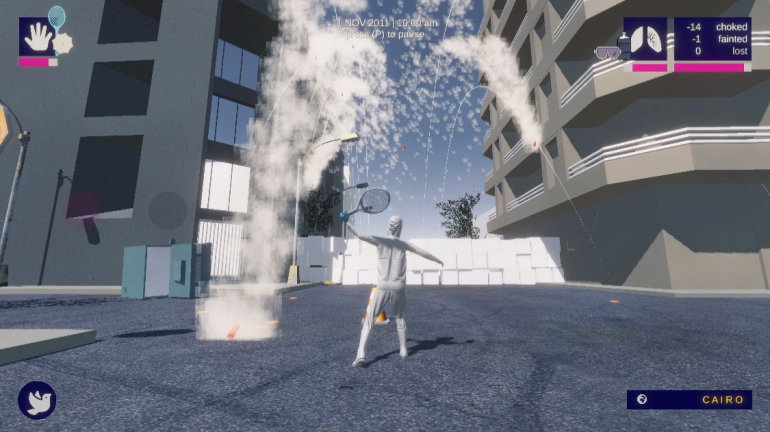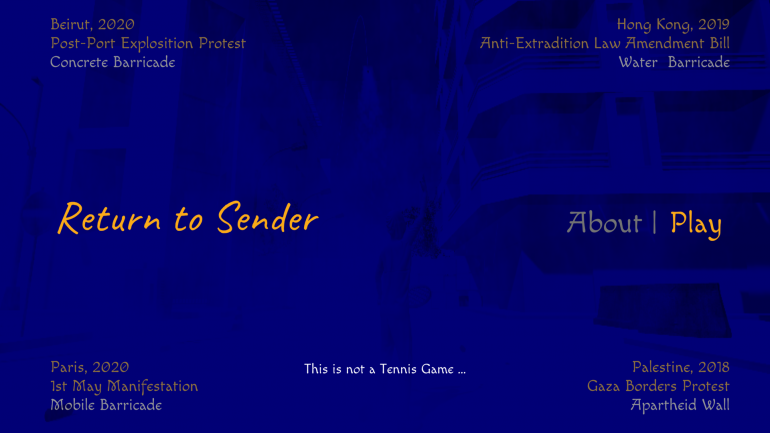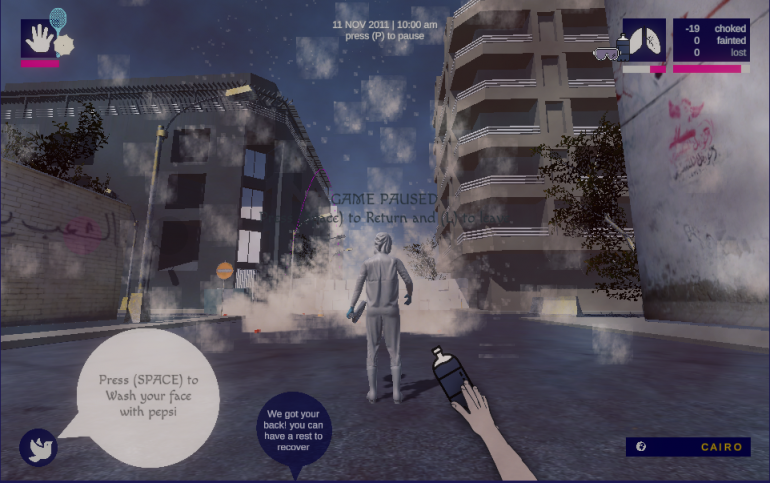
Project description
This project is about protesters’ capacity to disrupt policing tactics of oppression and spatial control in social movements. During a protest, one can’t hold the tear gas canister for a long time and create momentum to throw it back, or their hands may get burned. To protect themselves, protesters used tennis rackets to return tear gas to the police. Building on Sara Ahmed’s argument that “sometimes we need to disrupt usage to bring attention to a cause” (On the Uses of Use, 2019), at this moment, protesters were disrupting the use of the tennis racket by subverting its “playful” materiality into a political object of resistance. Such tactics disrupt the “elite class” ideology embedded in tennis sport. It also disrupts the function of the contested space itself as well as the policing order who does not anticipate such resistance.

Project Outcome
In Return to Sender, you play as a protester who returns tear gas using a tennis racket to protect the aggrieved crowd. It aims to subvert the complicit narrative that echoes the police at the game engine level (Unity, in this case) and the level of the gamespace. The way the game engine is configured assumes developers will code the element with dominant authority to agonize the other, which, in such a scenario, is the police. Thus, the game is built on top of a modified Unity tennis setup that shifts such power to the protester. The disruption extends to the level of the gamespace itself. In Return to Sender, police are intentionally invisiblized. And they are invisibilized by their own urban tactics of control which is the construction of barricades, a spatial tactic that aims to control the performance of our bodies in the space.

The gamespace will incubate environments from Palestine, France, Lebanon and Hong Kong where such tactics have been used. It is a game where the player does not lose to the police. As the protester struggles to breathe or look around, the hands of care will stretch to support the player with the needed equipment (e.g., Masks, goggles, or Pepsi to wash their face), simulating the collective ethos during such moments. Return to Sender explores the gamespace from protesters’ points of view and in resolute contrast to the capitalist politics of scoring that we inherit from mainstream game culture. The game goes beyond the dichotomy of police versus protesters to bring a narrative about us, protesters seeking social justice, in which our stories and struggles are the only ones that are seen, lived and played.
The game is developed during Hamza’s research stay with Rilla Khaled at the Technoculture, Art and Games Research Centre, Concordia University
